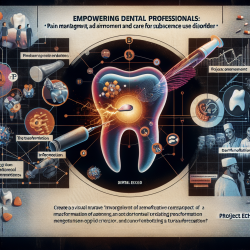Introduction
As practitioners working with children with Autism Spectrum Disorders (ASD), we are constantly seeking new methods to enhance our understanding and improve outcomes for these children. A recent study published in Frontiers in Neuroscience titled Application of pseudocontinuous arterial spin labeling perfusion imaging in children with autism spectrum disorders offers promising insights into how advanced imaging techniques can be utilized to better understand the neurological underpinnings of ASD.
Understanding the Study
The study employs pseudocontinuous arterial spin labeling (pCASL) perfusion imaging, a non-invasive MRI technique, to measure cerebral blood flow (CBF) in children with ASD compared to typically developing (TD) children. The research involved 17 children with ASD and 13 TD children, focusing on the differences in CBF across various brain regions.
Key Findings
- Children with ASD showed reduced CBF in the left frontal lobe, bilateral parietal lobes, and bilateral temporal lobes compared to TD children.
- Within the ASD group, higher CBF was observed in the right parietal lobe compared to the left.
- Positive correlations were found between certain behavioral scores and CBF in specific brain regions, suggesting that CBF could serve as a potential biomarker for ASD severity.
Implications for Practitioners
These findings highlight the potential of using pCASL as a tool to identify biomarkers for ASD, which could lead to earlier and more accurate diagnoses. As practitioners, understanding these neurological differences can inform our therapeutic approaches, tailoring interventions to target specific cognitive and behavioral challenges associated with altered brain perfusion.
Encouraging Further Research
The study underscores the importance of integrating advanced neuroimaging techniques into ASD research. Practitioners are encouraged to stay informed about emerging technologies and consider collaborations with researchers to explore the applications of these findings in clinical settings. Further research could investigate how interventions might influence CBF and whether changes in perfusion correlate with improvements in behavior and cognition.
Conclusion
The use of pCASL imaging provides a window into the brain's functioning in children with ASD, offering a promising avenue for developing objective biomarkers. By embracing these advancements, we can enhance our understanding of ASD and improve therapeutic outcomes for the children we serve.
To read the original research paper, please follow this link: Application of pseudocontinuous arterial spin labeling perfusion imaging in children with autism spectrum disorders.










